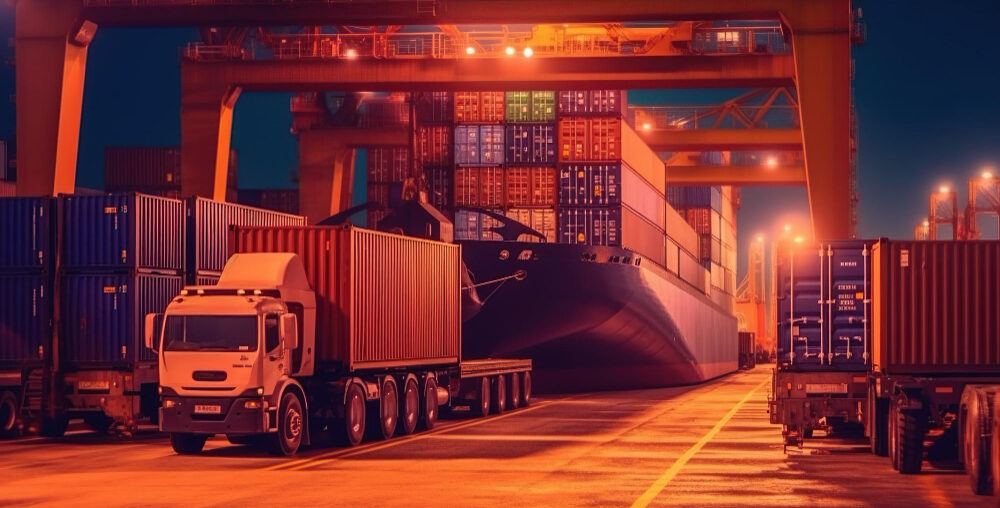In today’s interconnected world, freight plays a pivotal role in the movement of goods, commodities, and products across the globe. Whether you are shipping small packages or bulk cargo, freight services ensure that products reach their destinations safely, on time, and cost-effectively. But what exactly is freight, and why is it so essential in the supply chain? In this blog, we’ll dive into the world of freight, explore its types, and discuss how it drives global trade.
What is Freight?
At its core, freight refers to the goods or cargo that are transported from one location to another. It can be transported via several modes, including road, rail, air, and sea. The term “freight” is commonly used in the shipping and logistics industry to describe both the goods themselves and the transportation service provided to move these goods.
Freight services ensure that businesses can move raw materials, finished goods, or inventory between countries, cities, and even warehouses. It’s a process that involves a series of steps, including packaging, loading, transportation, unloading, and delivery, all of which are managed by freight service providers.
Types of Freight
There are several types of freight, each catering to different needs based on the nature of the goods, distance, and urgency. The four main modes of freight transport are:
- Road Freight
- Road freight is the most commonly used transportation mode for short to medium distances. Trucks, lorries, and other vehicles are used to carry goods, both domestically and internationally (via road networks between neighboring countries). Road freight offers flexibility and door-to-door service, making it an attractive option for businesses looking to move goods quickly and efficiently.
- Rail Freight
- Rail freight is an efficient way to transport large quantities of goods over long distances, especially for bulk materials like coal, minerals, or agricultural products. Rail transport offers cost-effectiveness and is considered a more sustainable alternative to road freight in some regions. However, rail networks are limited to regions with established rail infrastructure.
- Air Freight
- Air freight is the fastest mode of transportation, ideal for high-value or time-sensitive goods. This includes products like electronics, medical supplies, and perishables. While air freight is generally more expensive than other modes, it ensures that shipments reach their destination quickly, often within a day or two.
- Sea Freight
- Sea freight is the go-to option for transporting large quantities of goods, particularly for international trade. Cargo ships and container vessels move goods between ports around the world. Sea freight is cost-effective for bulk shipments but typically slower compared to air freight. It’s perfect for items that don’t require urgent delivery, such as electronics, clothing, and machinery.
The Role of Freight in Global Trade
Freight is the lifeblood of global trade. Over 90% of the world’s trade is carried by sea, and a significant portion of global shipments is handled by air and land freight. Freight logistics connect businesses to international markets, providing access to goods from around the world.
Consider the vast network of goods that travel through global supply chains. From the coffee beans grown in Brazil to the smartphones made in China, or the raw materials mined in Africa—freight ensures these products reach consumers everywhere. Without the ability to move freight across continents, industries such as retail, manufacturing, agriculture, and technology would not function at the scale we see today.
How Freight Affects Your Business
Whether you’re a small business owner or a large corporation, freight is a crucial element of your supply chain. Efficient and cost-effective freight services can make or break your ability to meet customer demand and manage operating costs. Here’s how freight impacts your business:
- Cost Management: Freight expenses can account for a large portion of your overall shipping costs. Choosing the right mode of transport—be it air, sea, road, or rail—can help optimize costs. For example, sea freight may be less expensive than air freight but slower, which means balancing speed and cost is crucial.
- Inventory Management: Reliable freight services ensure that inventory reaches your warehouse on time, helping you avoid stockouts or overstocking. It also allows businesses to manage inventory across multiple locations efficiently.
- Global Expansion: Freight services are vital for companies looking to expand internationally. It allows businesses to send their products to new markets and access raw materials from other countries, creating more opportunities for growth.
- Customer Satisfaction: Fast and reliable delivery is key to customer satisfaction. Whether you’re sending a product across the country or across the world, freight services ensure that your customers get their goods in a timely manner, which directly impacts brand loyalty.
The Future of Freight
The freight and logistics industry is evolving rapidly with technological innovations. Here are a few trends shaping the future of freight:
- Automation and AI: Automation in freight handling, such as autonomous trucks and AI-powered logistics, is streamlining operations, reducing human error, and improving efficiency.
- Sustainability: As the global economy moves toward sustainability, the freight industry is exploring ways to reduce its carbon footprint. This includes the use of electric trucks, fuel-efficient ships, and even renewable energy sources for operations.
- Digitalization: The digitalization of freight management systems is making it easier for businesses to track shipments in real-time, manage logistics, and reduce paperwork. Technologies like blockchain are also being explored to enhance security and transparency in freight transactions.
- E-commerce Growth: The rise of e-commerce is driving demand for more efficient and rapid freight solutions, particularly for small parcel deliveries. Companies are increasingly relying on freight services to meet the delivery expectations of their customers, especially in the fast-paced online shopping environment.
Conclusion
Freight may seem like a behind-the-scenes process, but its role is central to the global economy. It ensures that businesses can import and export products, meet customer demand, and continue to thrive in an interconnected world. As the logistics industry adapts to new challenges and technologies, freight will continue to evolve, offering even more efficient, cost-effective, and sustainable solutions for businesses around the world.
Understanding the complexities of freight is essential for anyone involved in the movement of goods. Whether you’re a business owner, a logistics professional, or a consumer, recognizing the value of freight services can help you appreciate how vital they are to the global supply chain.


